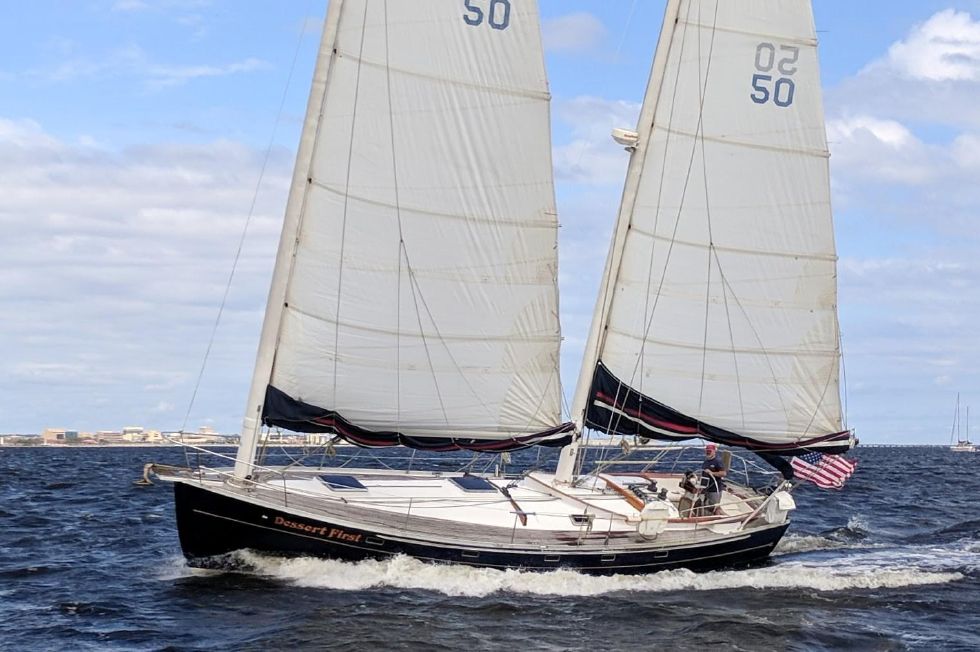In a Nutshell…
The choice of rigging material for a sailboat, which can significantly affect performance and safety, typically comes down to three primary options: stainless steel wire, rod rigging, and modern synthetic materials. Each type offers its own advantages and drawbacks, catering to various types of sailors and uses.
Decoding Standing Rigging: What’s it all About?
Standing rigging refers to the system of wires or rods that supports a sailboat’s mast, ensuring it remains upright and properly tensioned under different sailing conditions. In contrast to running rigging, which involves ropes and lines for sails, standing rigging is fixed in place. It is a crucial aspect of sailing, as the integrity of standing rigging directly impacts safety and the longevity of the mast.
Stainless Steel Wire Rigging: The Go-To Choice
The most commonly used material for standing rigging is stainless steel wire, typically crafted from 1×19 strand construction that consists of 19 wires twisted together. This option is a staple among recreational sailors due to its flexibility and affordability.
| Pros | Cons |
|---|---|
| Cost-Effective | Less Aerodynamic |
| Flexible & Forgiving | Slightly More Stretch |
| Easy to Source & Maintain | Susceptible to Crevice Corrosion |
| Readily Available | Shorter Lifespan |
| Familiar Technology |
Key Specifications & Considerations
- Construction: The 1×19 strand is the standard for standing rigging.
- Material: Type 316 stainless steel is favored for its corrosion resistance.
- Lifespan: Replacement is generally recommended every 10-15 years, depending on usage and checks.
- Cost: Typically, this is the most economical choice, significantly less expensive than rod or synthetic options.
Rod Rigging: The High-Performance Option
Rod rigging stands out as a premium choice, especially for high-performance racing yachts. Unlike traditional wire, rod rigging utilizes solid, high-tensile stainless steel rods, offering enhanced strength and reduced diameter.
| Pros | Cons |
|---|---|
| Superior Strength | Higher Initial Cost |
| Less Stretch | Specialized Installation Required |
| More Aerodynamic | Metal Fatigue Risk |
| Longer Lifespan | Less Forgiving of Mistakes |
| Lower Weight Aloft | Difficult to Inspect for Cracks |
Key Specifications & Considerations
- Construction: Made of solid rods tailored to specific rig designs.
- Material: Generally crafted from a higher-grade stainless steel alloy.
- Lifespan: Can last 15-20 years with regular inspection.
- Cost: Markedly more expensive than wire rigging concerning both materials and installation.
Synthetic Rigging: The Lightweight & Modern Option
Recent innovation in sailing materials has seen synthetic fibres emerge as a comprehensive option for standing rigging, particularly in competitive racing and top-tier cruising environments. Dyneema, a high-modulus polyethylene fibre, is frequently used for its impressive strength-to-weight ratio.
| Pros | Cons |
|---|---|
| Extremely Lightweight | Higher Initial Cost than Wire |
| Comparable Strength to Steel | Chafe & UV Degradation Vulnerability |
| Corrosion-Free | Creep Issues (Elongation under Load) |
| Excellent for Inspection | Requires Specialized Terminations |
| Easily Repairable |
Key Specifications & Considerations
- Construction: Typically a single braided line, often featuring a protective cover.
- Material: Dyneema (UHMWPE) represents the standard, available in various grades.
- Lifespan: Expected to last long term, though replacement is advised based on usage and visible wear.
- Cost: Generally more expensive than stainless steel wire, but prices vary compared to rod rigging.
Standing Rigging: A Direct Comparison
| Feature | Stainless Steel Wire | Rod Rigging | Synthetic Rigging |
|---|---|---|---|
| Material | Twisted 1×19 strands | Solid Rods | HMPE (e.g., Dyneema) |
| Flexibility | Flexible | Stiff | Flexible with Minimal Stretch |
| Cost | Lower | Higher | High |
| Lifespan | 10-15 years | 15-20+ years | Varies, can be long with care |
| Aerodynamics | Less Efficient | More Efficient | Very Efficient |
| Stretch | Some Stretch | Minimal Stretch | Minimal Stretch/Creep |
| Suitability | Cruisers, Day Sailors | Racers, High-Performance Yachts | Racers, Performance Cruisers |
This comparative analysis provides a valuable resource for sailors. However, for a comprehensive overview of all sailboat rigging aspects, referring back to a more extensive rigging guide may prove beneficial.
The Bottom Line: Making Your Choice
The right rigging choice hinges on individual sailing goals. For the predominant portion of recreational sailors, stainless steel wire rigging typically remains the best option due to its affordability and reliability. Yet, for racing aficionados and performance-driven sailors, rod or synthetic rigging could hold distinct advantages through lower stretch and weight optimization, translating into improved vessel performance. Those venturing far offshore should also consider the ease of inspection and repair offered by synthetic rigging.
The Sea’s Narrative
Ultimately, understanding rigging is a multi-dimensional journey that encompasses the intricate dance of culture, nature, and regional differences. Whether you seek to sail familiar waters or traverse undiscovered channels, consider boat rentals for your next sea adventure. Each lagoon, bay, and cove conveys its own stories, much like local customs, cuisines, and dialects do. For options that cater to every budget and desire, explore GetBoat.com.
Висновок
In conclusion, choosing the right rigging material can greatly affect the performance, safety, and longevity of a sailboat. Each option—from stainless steel wire to rod and synthetic rigging—presents its own unique benefits and challenges. Discover your ideal rigging alongside GetBoat.com, your trusted partner in sailing adventures, ensuring you have access to the right information and choices for unforgettable experiences on the water.


